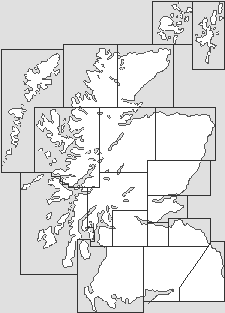 The top of North Berwick Law with North Berwick in the background |
East Lothian is one of the 32 unitary council areas into which Scotland has been divided since 1996. It lies to the east of Edinburgh and part of it occupies a broad peninsula which projects north into the Firth of Forth. For accommodation in East Lothian and a full list of features, see our Edinburgh & Lothians area pages.
 East Lothian Since 1996 Note About Image Copyright |
East Lothian ranks as the 18th largest local authority area in terms of physical size and the 21st largest in terms of population. The main A1 trunk road curves up through the area, serving much of it as a result.
The main settlements in East Lothian are Musselburgh, Haddington, Dunbar, North Berwick, East Linton, Tranent, Prestonpans and Aberlady. Modern East Lothian is bordered by Scottish Borders, Midlothian and the City of Edinburgh.
Historically, East Lothian was one of the traditional counties into which Scotland was divided prior to 1975. It only became known as East Lothian, however, following a minor reorganisation in 1921 that changed its name from Haddingtonshire and made some minor boundary changes that resulted in the transfer of the village of Whitecraig, south of Musselburgh, from the old County of Edinburgh to East Lothian.
East Lothian remained a county in its own right until reorganisation in 1975 swept all the counties away in favour of 12 regions. The regions formed in 1975 were the upper tier of a two tier local authority system, and the traditional county area of East Lothian became part of the region of Lothian.
Most regions were divided into a number of district council areas, and Lothian had four. As part of the reorganisation East Lothian became a district council area, and at the same time it increased in size, gaining Musselburgh and Inveresk from Midlothian.
Regions and districts disappeared from the scene in a major reorganisation in 1996, being replaced by 32 unitary council areas. Lothian's four district councils, including East Lothian, each became a unitary council in its own right, taking over the boundaries of the district which had preceded it.

|
|
|
InformationEast Lothian Council:www.eastlothian.gov.uk |
 East Lothian, 1975 to 1996 Note About Image Copyright |
 East Lothian, 1921 to 1975 Note About Image Copyright |